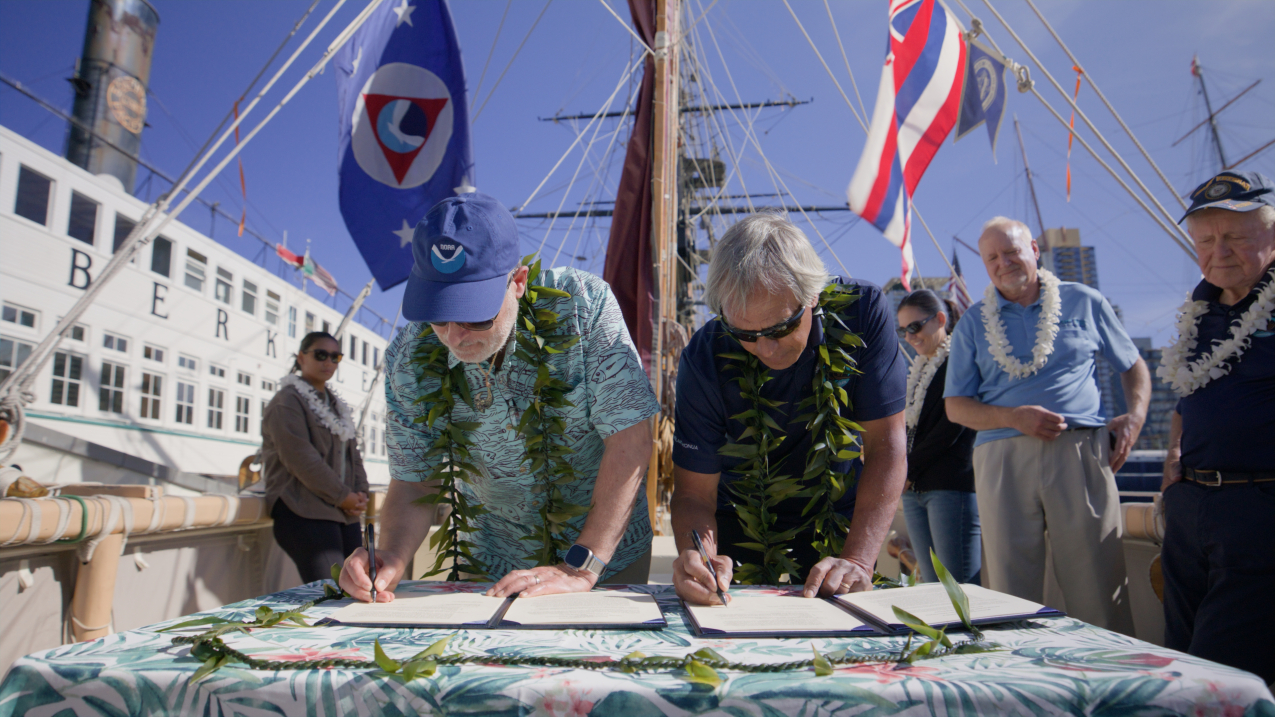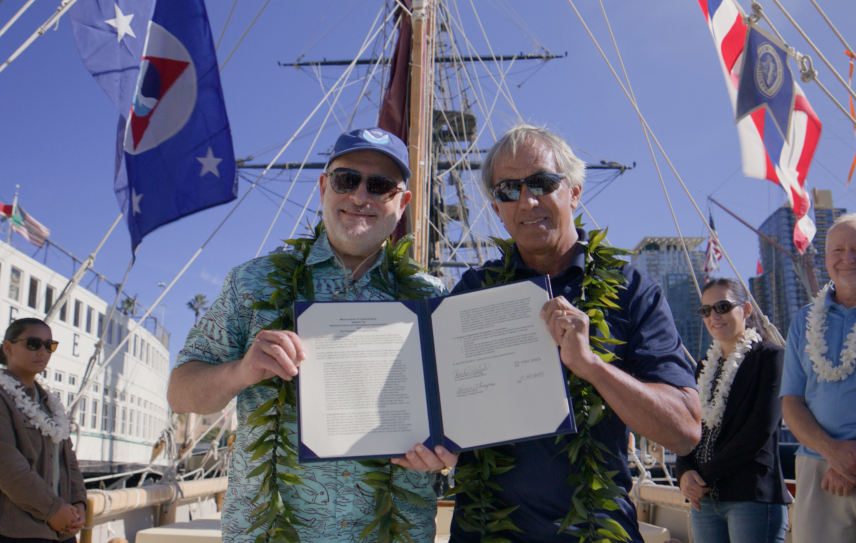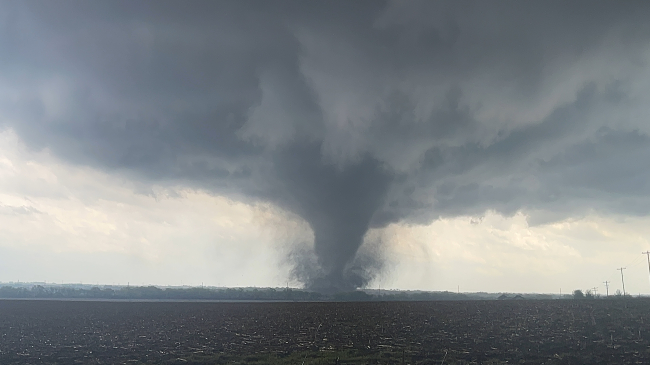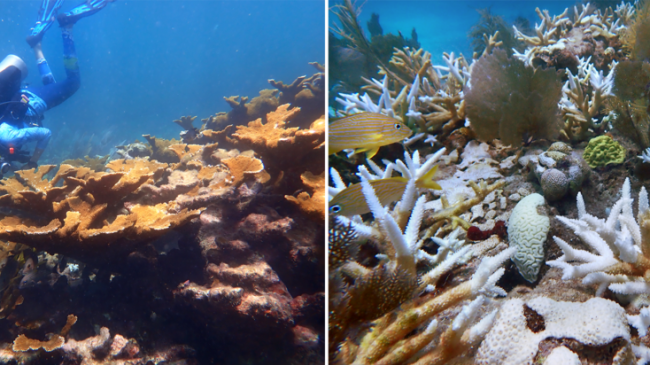Traditional science, indigenous knowledge will help communities make informed decisions about environmental stresses

NOAA Administrator Rick Spinrad, Ph.D., and Polynesian Voyaging Society CEO Nainoa Thompson signed the MOU in San Diego, California, aboard Hōkūle‘a. (Image credit: Ryan Miyamoto)
NOAA and the Polynesian Voyaging Society (PVS) signed a memorandum of understanding (MOU) late last month agreeing to collaborate on the cultural Moananuiākea voyage and future PVS voyages. The Moananuiākea voyage offsite link — a 43,000 nautical mile, 47-month circumnavigation of the Pacific by traditional Polynesian voyaging canoes Hōkūle‘a and Hikianalia — will cover 36 countries and archipelagoes, nearly 100 indigenous territories and 345 ports.
“I am thrilled to collaborate with the Polynesian Voyaging Society to gain a better understanding of how the environment is changing around us,” said Spinrad. “Partnerships like this, where we combine traditional science with indigenous knowledge, are key to empowering communities with the knowledge and tools necessary to adapt to environmental, social and economic changes.”

"This partnership is so important because NOAA has the best eyes and ears on what's happening to the systems of the Earth,” said Nainoa Thompson, CEO, Polynesian Voyaging Society. “We have relied on NOAA for decades, and we're still alive because of them. NOAA is the single most important tool of information to make decisions, and it has kept us out of the storms. As NOAA is watching the Earth, they give us information so we can make better choices, but it's not just about finding islands anymore for us. It's about taking care of the only one we have: The Earth."
The MOU sets forth the general terms and conditions for PVS and NOAA to support each other during the Moananuiākea voyage and after to more effectively carry out respective mission objectives and organization responsibilities. Additionally, the MOU outlines an agreement to collaborate on other areas of mutual interest related to better understanding current environmental conditions and projecting future changes to help communities make informed decisions in the face of environmental stresses.
Potential areas of mutual interest and collaboration include, but are not limited to:
- Providing rapid and timely data and access to NOAA products and services to support safe voyage, including making weather and marine expertise available as needed to help plan and execute safe sail plans.
- Supporting PVS in their educational and outreach initiatives as it relates to NOAA’s mission of science, service and stewardship.
- The engagement of NOAA staff and facilities during the Moananuiākea voyage and future voyages.
The mission of PVS offsite link is to perpetuate the art and science of traditional Polynesian voyaging and the spirit of exploration through experiential educational programs that inspire students and their communities to respect and care for themselves, each other and their natural environments.
Media contact
Jasmine Blackwell, jasmine.blackwell@noaa.gov, (202) 841-9184



